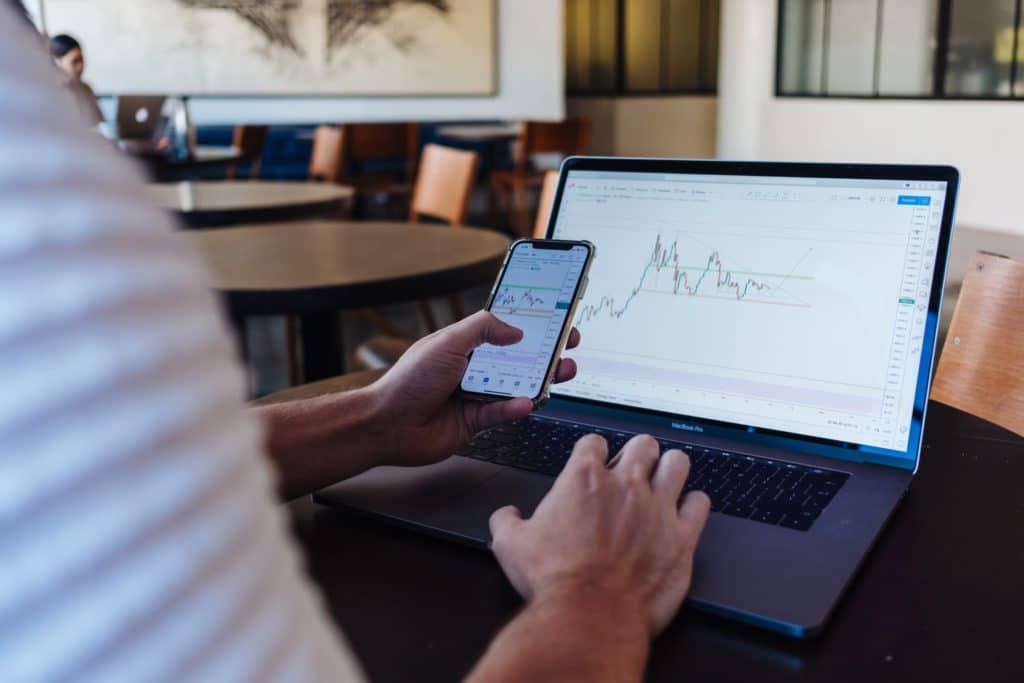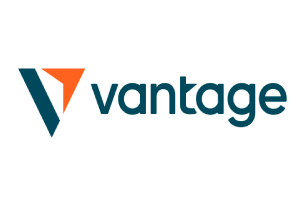Looking to learn how to trade shares? If so, it is not unusual to feel somewhat overwhelmed about the financial markets. For the uninitiated, the abundance of information alone is enough to turn the newbie trader away.
Our Forex Signals
1 - month
Subscription
 Up to 15 signals daily
Up to 15 signals daily 76% success rate
76% success rate Entry, take profit & stop loss
Entry, take profit & stop loss Amount to risk per trade
Amount to risk per trade Risk reward ratio
Risk reward ratiomonth
3 - month
Subscription
 Up to 15 signals daily
Up to 15 signals daily 76% success rate
76% success rate Entry, take profit & stop loss
Entry, take profit & stop loss Amount to risk per trade
Amount to risk per trade Risk reward ratio
Risk reward ratiomonth
 Most popular
Most popular
6 - month
Subscription
 Up to 15 signals daily
Up to 15 signals daily 76% success rate
76% success rate Entry, take profit & stop loss
Entry, take profit & stop loss Amount to risk per trade
Amount to risk per trade Risk reward ratio
Risk reward ratiomonth
Lifetime
Subscription
 Up to 15 signals daily
Up to 15 signals daily 76% success rate
76% success rate Entry, take profit & stop loss
Entry, take profit & stop loss Amount to risk per trade
Amount to risk per trade Risk reward ratio
Risk reward ratioSeparate Swing Trading Group
 Up to 3 signals weekly
Up to 3 signals weekly 76% success rate
76% success rate Entry, take profit & stop loss
Entry, take profit & stop loss Amount to risk per trade
Amount to risk per trade Risk reward ratio
Risk reward ratiomonth
1 - month
Subscription
 Up to 15 signals daily
Up to 15 signals daily 76% success rate
76% success rate Entry, take profit & stop loss
Entry, take profit & stop loss Amount to risk per trade
Amount to risk per trade Risk reward ratio
Risk reward ratiotime
With that being said, once you learn how the ins and outs of share trading actually work, it won’t be long before you realize that the benefits are well worth the effort. In other words – with the right information, investing in shares need not be confusing at all.
In this ultimate beginner’s guide, we explain everything there is to know so that you can learn how to trade shares in the fastest time possible!
Eightcap - Regulated Platform With Tight Spreads

- Minimum deposit of just 250 USD to get lifetime access to all the VIP channels
- Use our Secure and Encrypted Infrastructure
- Spreads from 0.0 pips on Raw Accounts
- Trade on the Award-Winning MT4 & MT5 Platforms
- Multi-jurisdictional Regulation
- No Commission Trading on Standard Accounts

What is a Stock?
Stocks are securities that represent part ownership of a company. These are bought in the form of shares. When a firm goes public, the shares of the company are made available for purchase. Anyone can purchase these shares, thus owning a stake in the company.
Companies could go public for a number of reasons. It could be the need to raise money or to provide their stakeholders with a profit or even as an eventual exit strategy.
What is Shares Trading?
In its definition, investing means putting money into property, a financial scheme, or a venture with the expectation of achieving a future return.
With that said, share ‘investing’ and share ‘trading’ are quite distinct.

On the other hand, share trading is the buying and selling of equities of a particular company. This is done on a relatively short-term basis. For instance, let us say that you feel confident that Facebook shares will rise in value.
Or in investor’s jargon, you are feeling “bullish” about Facebook. You decide to buy £1,000 worth of Facebook stocks and sell them a few hours or days later to make a profit of 2%.
In an alternative way, if you think that the shares will depreciate or look “bearish,” then you decide to short-sell the stocks. This is the critical component of share trading, enabling you to profit if you think the company’s value will go down.
Learn Share Trading – How Does it Work?
The two ways to earn money through share trading are via:
- Long trading by selling a share for a higher price than you bought it for.
- Short trading by buying a share for a lower price than you sold them for.
In order to learn to trade share, you first need to have a thorough understanding of these two approaches.
Long Trading of Shares
In its simplest form, long trading of a share means you are buying the equities anticipating an increase in price. It is not so different from investing in a stock, as you are hoping to sell the shares for a higher price.
Here is how it works.
- You feel bullish on XYZ shares, so you proceed to place a “buy” order with your broker.
- You buy 1,000 shares of XYZ at $10, at a cost of $10,000.
- A few days later, the shares of XYZ are priced at $10.50.
- You then place a “sell” order with the broker and sell at $10,500.
- Your net profit is $500 minus commissions.
When you go long, your profit potential could rise indefinitely, so in theory, your order could go up to any value. However, day traders prefer to make exit their share positions in a matter of minutes or hours – with the view of making smaller gains.
On the flip side, if the shares drop in volume, you will be facing losses.
As such, share traders work to keep risk and profits under tight control, typically exacting profits from multiple small moves to avoid significant price drops.
Short Trading on Shares
Going short on a share is often confusing to most traders as the concept is that you first have to buy shares to sell them. Short traders realize a profit if they can buy a share at a lower price than they sold it for. In financial markets, you can sell and then buy also.
Take a look at this example to learn to trade shares by ‘going short’.
- If you feel bearish about XYZ shares, you place a “sell” order with your broker.
- If the share is valued at $10 and you sell 1,000 shares, you ‘receive’ $10,000.
However, it is not your money yet. Instead, your account will now show that you have -1,000 shares. Until you buy back these 1,000 shares, you will not know whether you are at a profit or loss in this trade.
- If the share value goes down to $9.50, you place a “buy” order with your broker.
- You will pay $9,500 for those 1,000 shares. This brings you a profit of $500 minus the commissions.
Generally, to go short in the share trading markets, your broker must borrow the equities from someone who owns them. If the broker is unable to locate the required number of shares on your behalf, then you won’t be able to go short.
For these reasons, traditional stockbrokers do not allow short trading. That is why CFD share trading platforms are popular with day traders as they offer the flexibility to go short at the click of a button.
Which Stocks can you Trade?
If you are trading online, the best share trading sites today give you access to thousands of shares. This helps you create a diversified portfolio of stock CFDs.
Here we have a list of the most popular stock exchanges that traders like to target.
New York Stock Exchange (NYSE)
As one of the most traded stock exchanges in the world, almost every online broker will give you unrestricted access to the NYSE. You will find the largest blue-chip companies trading on it, including Disney, Ford Motors, JP Morgan, and more.
NASDAQ Composite
NASDAQ primarily covers the major tech companies of the world along the lines of Apple, Facebook, Netflix, Microsoft, and others.
London Stock Exchange (LSE)
LSE hosts all prominent companies based in the UK. If you would like to gain exposure to the UK economy, the LSE has the likes of British American Tobacco, Barclays, HSBC, BP, and more. The FTSE 100 is another popular choice for the UK market, as this is the index that covers the 100 largest firms listed on the LSE.
Tokyo Stock Exchange (TSE)
The TSE gives you exposure to the Asian economies – with big players such as Mitsubishi, Toyota, NIPPON, and SoftBank.
CFD Share Trading
Before we head further, it is important for us to discuss a key term that you will need to understand to learn to trade share effectively – CFDs.
A Contract for Difference (CFD) is a derivative trading tool that allows traders to speculate on the rising or falling prices of stocks. When you trade via CFDs, you do not own the stock you are trading. In contrast, CFDs allow you to speculate on the future direction of the stock.
On the downside, you will not be entitled to the stockholder rights, which means you won’t receive dividends. Instead, you will earn money through the capital gains you make by selling or buying the stock for a higher or lower price than you paid.
Share Trading with Leverage
Leverage is a trading mechanism that investors can use to increase their market exposure by paying less than the full value of the stock. In other words, a segment of your share trading order is facilitated on credit.

For example, let’s say you want to invest $10,000 in stock, but you only have $5,000 in your trading account. By using leverage, you could buy on a margin at 2:1, giving you $20,000 to invest. However, you will have to make an initial deposit or a down payment to your broker to buy on margin.
Let us look at what a successful leveraged stock trade might look like.
- You are going bullish on XYZ stocks, so you decide to go ‘long’.
- The current share value of XYZ is £30.50.
- You only have £100 in your trading account, but you want to trade with more.
- You apple leverage of 5:1, meaning that you can buy XYZ stocks to the value of £500.
- A few days later, XYZ increases to £35.50 (gains of 16.3%).
- You place a sell order to cash your profits.
In this case, you would have originally made a 16.3% profit on your £100 stake – which works out at £16.30. But, since you leveraged to 5:1, your actual gain would be £16.3 x 5 = £81.5.
If the stock price did not increase in value, you would have lost money. As the size of your leverage increases, these losses are amplified further.
It is important to note that during your initial days of trading stocks, you might not be making money. Rather, you might even end up losing. As such, it is vital for you to understand the implications when you learn to trade shares through leverage.
Learn to Trade Share – Market Orders
Every single trade that you place will require two individual orders, one is to open and the other to close.
- When long trading, you open with a buy order and close with a sell.
- On short trading, you begin with a sell order and close with a buy order.
Once you know which approach you are going to take for the day, there are a few other order types you have to put in place.
Market/ Limit Order
If you choose a market order, then this means that you are willing to accept the next available price of the stock in question. As soon as the order is placed, the trading platform will simply execute the trade.
On the other hand, a limit order requires you to specify the exact price the broker should execute your trade at. When you choose this, there is always the chance that this price will not be matched. But, it will give you the opportunity to enter or leave the market at a price that you decide.
Stop-Loss Order
A stop-loss order will allow you to exit your stock trade at a specified price – when you are in the red.
When you go long, sell-stop orders are triggered by a market if the price falls below a certain level. This works on the assumption that if the price drops to this sell-stop price, it could only decrease further.
For example, if you want to exit your position when you are 3% down, the stop-loss order will do this on your behalf.

It is again worth considering the scenario that the stop-loss order will not be matched. In that case, you might want a ‘guaranteed’ stop-loss order. You will have to pay a higher spread, but the broker will guarantee that the stop-loss price will be triggered irrespective of the market position.
Take-Profit Order
A take-profit order is the exact reverse of the stop-loss order. In an ideal scenario, you might hope for the price to continue rising or lowering in your favour. But there is always the chance that it could overturn at any point. With that in mind, it is thus better to lock-in your gains when the price meets a profit-target.
Once the price hits the target, your trade will automatically close.
Share Trading Fees
While you learn how to trade shares, it is easy to overlook the fees and commissions that you will need to pay to your chosen broker. However, it is essential to know how much you are paying as it could eat into your investment returns.
Below we list some of the most common fees that you need to look out for.
Non-Trading Fees
The term ‘non-trading fee’ applies to charges you pay to the broker that is not related to buying and selling assets. These range from deposit fees, withdrawal fees, and account fees.
Among this, you might want to make a note of the inactivity fee, which is charged by the broker if your share trading account remains inactive for a couple of months.
Share Trading Commissions
The majority of share trading platforms will charge you a percentage of the amount of your trade. For instance, if a broker charges a commission of 0.6% and you buy stocks for £1,000, you will be charged £6 as a fee.
Remember that you have to pay a commission for both selling and buying. That is, if you sell the same stock in the above example for a profit of £1,500, the commission you pay would be £9.
Spreads
In the stock market, the spread is the difference between the buy and the sell price quoted for a stock. If the lowest ask price (buy) for a share of XYZ stock is $10, and the highest bid price (sell) is $9.50, the spread of XYZ is $0.5.
This means the difference between the two prices is 5%. You need to make a profit of at least 5% to break even in this trade.
- To illustrate this – let us say that you bought shares of XYZ at $10 per stock.
- You have a sudden change of heart, so you decide to sell the stocks right away.
- However, you cannot sell the stocks at the price you bought them, but at $9.50.
- This means that you are actually at a 5% loss. You would only break even if you were able to sell at $10 itself.
This is why you must opt for a share trading platform that offers minimal spreads. Or else, your profits will often be determined by the gap in pricing.
Learn to Trade Shares Today
It is not difficult to learn to trade shares online, but it does take time to make consistent profits. If you expect to make profits right from the get-go, you might be disappointed. Instead, all newbie (and seasoned) traders will encounter losses.
For those who are entering as complete beginner to online trading platforms, here is a step-by-step guide you can follow.
1. Find a Share Trading Site
In order to trade shares online, you will first need a brokerage account. A quick internet search will display hundreds of online brokers and agents who want your business. However, this myriad of options could also be confusing.
At one glance, they might all seem to offer similar features and tools, which is why you need to do your homework before choosing your trading site. Consult online reviews and factors such as access to international stock markets and fee structure.
To make things a little easier, we have included a list of some of the best share trading sites at the end of the guide.
2. Open an Account
Once you have chosen the right share trading site for your requirements, you need to open an account. You will need to provide your personal details and choose a username and a password.
Much like any other financial establishment, you will also be required to verify your identity by uploading a copy of your government-issued ID.
3. Add Funds to your Account
Share trading sites require you to have funds in the account rather than to transfer money for every trade. Brokers need to have immediate access to your funds to make transactions as stock prices change on a second-by-second basis.
Although payment options for each trading site will vary, this can include debit or credit cards, a bank wire/transfer, or e-wallets such as PayPal, Skrill, and Neteller.
4. Decide How much you Want to Invest
For beginners, the most important question is how much money you need to start investing or trading. There is no limit to how much you can invest – but, it might be worth starting off small.
With that said, you will at the very least need to ensure that you are able to meet the broker’s minimum trade size.
5. Place Your Order
Once you place your order, there is no turning back. Weigh in the points we have discussed above and made an informed decision before taking the plunge
In summary, you will be following these steps.
- Choose the stock you want to buy or sell.
- Determine the size of your trade and enter the amount.
- Choose from a limit or market order.
- If you are leveraging, select your multiple.
- Enter a stop-loss position to mitigate your losses.
- Enter a take-profit position to lock-in your gains.
Once you place your order, the share trading platform should execute it within seconds.
6. Close Your Position
If you have fixed a stop-loss or take-profit order, then the closing of the position will take place accordingly. Otherwise, you will need to close your trade manually. You will have to place a sell or buy order to exit your trade. When this step is completed, you will receive any profits earned to your share trading account balance.
Choosing the Right Share Trading Platform
One of the biggest challenges for beginners is to find a reliable share trading platform to entrust their trading choices. We recommend that you consider the following points before deciding which trading site to join.
1. Is the site regulated?
Before you go through the features and fee structure, the first thing to ensure is that the trading platform is regulated. All brokers are required to hold a license with regulatory bodies such as the FCA and ASIC. You do not want to join a broker site that isn’t regulated, no matter how useful their features are. Otherwise, you are putting your funds at risk.
2. What Payment Methods are Available?
You need to ensure that the site allows you to transfer in funds via your preferred method. It would also be good to have more than one feasible option.
Many investors look for bank card payment methods as it will allow them to deposit and withdraw funds straight away. However, when you do this, you also have to consider the limits of each transfer.
3. Commissions and Spreads
As we have already covered, you need to study the spreads and commissions you will be paying at the share trading site. Ideally, you are going for low commissions and tight spreads.
Perform lots of research on your chosen trading site and compare its commission before you sign up.
4. Leverage Limits
Even if you choose not to use leverage when you first get started in the share trading space, in the future, you might require this option. As such, ensure that your broker supports this right from the start.
Based on your location, there will be a limit to the amount of leverage that the broker can offer. For instance, the UK and EU have leverages capped at 5:1 on shares. On the other hand, some countries do not have any limits at all.
5. What Resources do they Offer?
Every single move in the share trading market is calculated. You need all the right research tools to arrive at each decision. If you want to do technical analysis, several trading sites also offer advanced chart reading tools.
It is equally important that you have access to fundamentals and trading tips. Choose a stock trading site that can provide both, along with real-time updates.
6. Which Tradable Markets are Available?
If you have already chosen the stock you want to invest in, you have to find a site that offers the specific exchange it is listed on. Furthermore, not every trading platform gives you access to international markets – so be sure to review this before signing up.
7. Withdrawal Periods
Many traders tend to overlook the withdrawal policy of a trading site. Some sites take a lot of time to manually process withdrawals, while others do this automatically. Preferably, you want to work with a site that can process payments no later than 48 hours after you requested the withdrawal.
8. Customer Support
Last but not least, you need a broker that offers excellent customer support. This means at support on at least a 24/5 basis – as this matches the hours of the traditional financial markets. Today, sites are eager to provide support through live chat or email, which allows them to cater to an international marketplace.
Best Platforms to Learn to Trade Shares
As discussed earlier, here is our list of the top five trading platforms that meet all our selection criteria. All five are ideal for beginners and have the following characteristics:
- Regulated by a tier-one licensing body.
- Supports multiple payment methods.
- Offers low spreads and commissions.
- Provides reliable customer service.
- Allows short selling and leverage.
1. AVATrade – 2 x $200 Stock Welcome Bonuses
AvaTrade is one of the oldest online brokerages firms in the space and continuous to provide reliable support for investors. The company is regulated in three tier-1 and three tier-2 jurisdictions, making it a safe and low-risk broker for stocks, forex, and other CFDs products. It offers variable pricing for spreads. Though you will find market analysis and trading signals, you might not find the advanced research tools available in the other trading sites on the list.

- 20% welcome bonus of upto $10,000
- Minimum deposit $1,000
- Verify your account before the bonus is credited
2. VantageFX – Ultra-Low Spreads
VantageFX VFSC under Section 4 of the Financial Dealers Licensing Act that offers heaps of financial instruments. All in the form of CFDs - this covers shares, indices, and commodities.
Open and trade on a Vantage RAW ECN account to get some of the lowest spreads in the business. Trade on institutional-grade liquidity that is obtained directly from some of the top institutions in the world without any markup being added at our end. No longer the exclusive province of hedge funds, everyone now has access to this liquidity and tight spreads for as little as $0.
Some of the lowest spreads in the market may be found if you decide to open and trade on a Vantage RAW ECN account. Trade using institutional-grade liquidity that is sourced directly from some of the top institutions in the world with zero markup added. This level of liquidity and availability of thin spreads down to zero are no longer the exclusive purview of hedge funds.

- The Lowest Trading Costs
- Minimum deposit $50
- Leverage up to 500:1
Conclusion
As we have uncovered in our learn to trade shares guide, becoming a hybrid investor can take time. The good news is that you can utilize active and passive strategies, by combining stock investing with share trading.
Crucially, we have covered all the essentials you need to know about stepping into the online trading markets. Just make sure that the trading site you choose offers everything you are looking for and understand the risks before investing.
AvaTrade - Established Broker With Commission-Free Trades

- Minimum deposit of just 250 USD to get lifetime access to all the VIP channels
- Awarded Best Global MT4 Forex Broker
- Pay 0% on all CFD instruments
- Thousands of CFD assets to trade
- Leverage facilities available
- Instantly deposit funds with a debit/credit card

